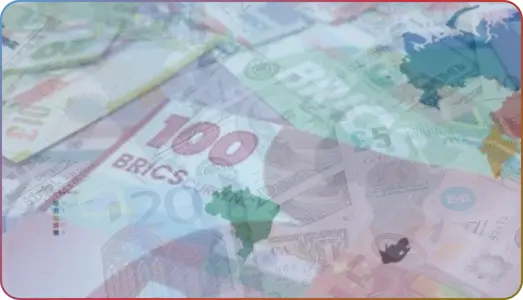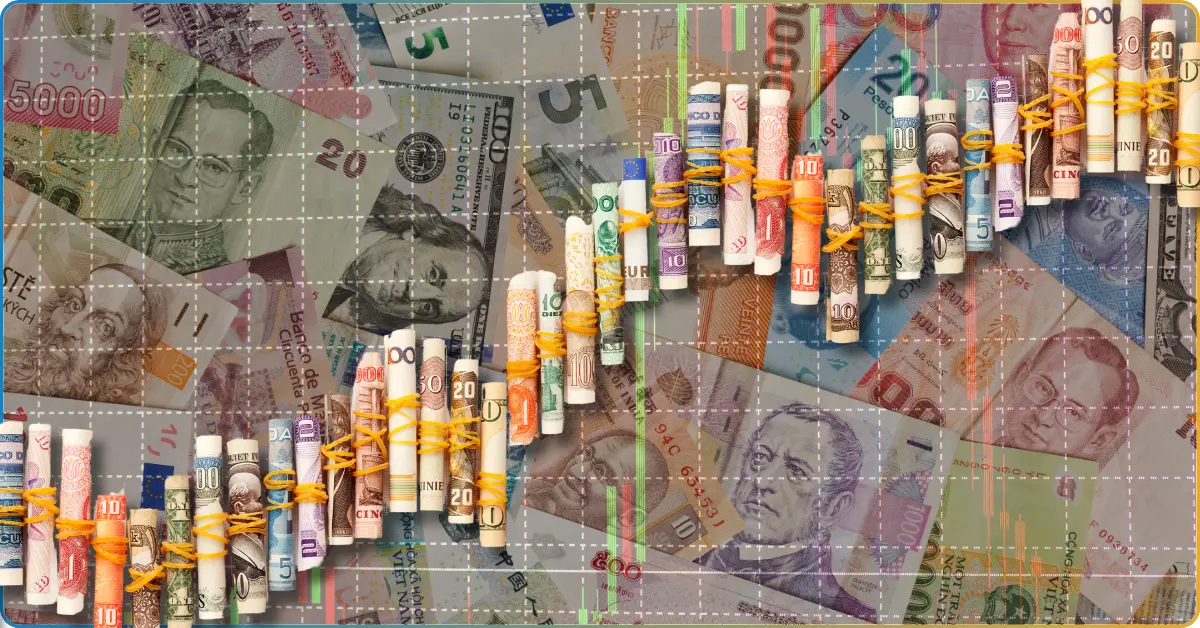US President-elect Donald Trump has threatened to impose severe tariffs on imports from BRICS countries after talks of a BRICS currency, leaving billions of South African exports at serious risk.
While Trump is yet to assume the presidency in January next year, the rand has already started to weaken. This week, it is trading 0.5% lower against the US dollar. This is the weakest the rand has been in two weeks.
South Africa joined BRICS in December 2010 to enhance international relations. The group prides itself in shaping a “new global economic order that is more inclusive of emerging economies.”
The BRICS bloc of countries recently held a summit in October, at which Russian President Vladimir Putin proposed a blockchain-based international payments system.
Trump threatens 100% tariffs on BRICS bloc
On 2 December, Trump posted on X that he would impose 100% tariffs on imports from BRICS Member States if they continued to develop their own currency, an idea that has been floating around since the inception of BRICS in 2009.
In his tweet, Trump warned Brics “to go find another sucker!” if they set the dollar aside for a new trading currency. Moreover, he demanded, “commitment” from BRICS countries that they will “neither create a new BRICS currency nor back any other currency to replace the mighty US dollar.”
Read more: What happened to Dogecoing following Trump’s Victory?
If the BRICS countries failed to do so, they would “face 100% tariffs and should expect to say goodbye to selling into the wonderful U.S. Economy,” added Trump in his tweet.
SA says no plans for de-dollarization, blames misreporting
On Monday, the spokesman of the Department of International Relations and Cooperation (DIRCO), Chrispin Phiri, insisted that there were no plans to create a BRICS currency.
Phiri blamed misreporting, “recent misreporting has led to the incorrect narrative that BRICS is planning to create a new currency,” Phiri said.
He added that “this is not the case. The discussions within BRICS focus on trading among member countries using their own national currencies.”
BRICS, which groups emerging market powers Brazil, Russia, India, China, South Africa, Iran, Egypt, Ethiopia, and the United Arab Emirates, has called for reforms in the international payment system. However, adopting a new currency has yet to be agreed upon.
How was the BRICS currency developed?
A centralized BRICS currency was first mooted during the group’s inaugural summit in 2009.
The group discussed the need for a new and more stable alternative currency to the US dollar, a need heightened by the US housing crisis, which nearly collapsed the entire global banking system during the financial crisis of 2008.
At the 2023 BRICS summit hosted by South Africa, the bloc agreed to study the possibility of creating a common currency between BRICS countries. The currency would minimize dollar-related risks, although BRICS leaders have noted that this would take many years.
Furthermore, Russian President Putin went further to propose a blockchain-based international payments system to avoid Western sanctions.
While response to Putin’s proposals were met with little enthusiasm, BRICS leaders have agreed to facilitate more trade in local currencies to cut reliance on the dollar.
Russia, Iran, and Brazil have been the strongest proponent of the new currency. Russia and Iran’s motive for a new currency is fairly clear since they have been isolated from much of the global financial system thanks to the US.
Meanwhile, China and India have not expressed a view. At the same time, South Africa has clarified that it has agreed to boost trade by using only national currencies.
Russian Government Spokesperson Dmitry Peskov said that there is a growing trend of countries outgrowing the reliance on the dollar. He said that, “more and more countries are switching to the use of national currencies in their trade and foreign economic activities.”
How feasible is a new BRICS currency?

A new joint currency would be a major undertaking for BRICS nations – and a complicated one at that.
The BRICS countries have very different political and economic systems. For instance, they are at varied stages of economic development.
Read more: South Africa inflation rate drops sharlpy, lowest since 2020
China is responsible for 70% of the bloc’s total GDP and consistently has a trade surplus, with a reserve of $3.26 trillion. Meanwhile, India runs constant trade deficits, and South Africa’s reserves are only 1.9% of China’s.
If all bilateral trades were settled in the new BRICS currency, India and SA could quickly run out of reserves, and the entire economy would go bankrupt.
Moreover, China’s economic dominance in BRICS will create a huge imbalance that could eventually overshadow the interests of other BRICS countries.
Dr. Sithembile Mbete, an international relations expert from the University of Pretoria, said that the de-dollarization proposed by BRICS is unlikely. She said that international trade is dominated by the West-controlled Swift banking system (Society for Worldwide Interbank Financial Telecommunications).
The bloc’s New Development Bank continues to rely on the dollar for its investments, though it has recently allowed crypto investments.
At present, BRICS countries can use local currencies when trading with each other but still need the dollar to trade with Western countries.
On the other hand, the dollar’s dominance is unlikely to be undermined.
Is Trump’s threat real?
The president-elect could well be jumping the gun because, despite much noise from BRICS leaders, the currency proposal has made little progress.
Global Traders Advisor Donald MacKay expressed skepticism over the possibility of a BRICS currency. He also suggested that Trump’s threats are an impulsive reaction and not a sound economic strategy.
Read more: Everything we know so far about South Africa’s ambitious economic targets
Trump’s threat could strain relations with key trading partners, such as China, Brazil, and South Africa.
However, this would also mean a lot of trouble for the US. Trump has used the word “tariff” quite lightly and even called it his “favorite word.” Trump had promised to put tariffs on multiple imports, including 25% on Mexico and Canada and 10% on China.
However, Trump and his VP, JD Vance, have consistently described the word wrong. On multiple occasions, Trump has falsely claimed that foreign exporters pay the tariff.
In truth, tariffs are taxes paid by local businesses when foreign-made goods arrive at their border. So, if Trump increases tariffs on imports from China, all US companies importing goods from China would have to pay the extra 25%. This would increase product prices for consumers.
How will it affect South Africa?
Before the online threats, South Africa’s economic indicators were in the green. In October, the trade surplus widened to R14.6bn, exports surged to 5.3%, and employment rates increased to 42.41%.
However, after Trump’s threat to BRICS, the rand weakened to its lowest in two weeks at 18.18 against the US dollar.
Prof. William Gumede, author of South Africa in Brics, said he sees no benefit for the rand if a BRICS currency is created.
“So far, our biggest trading partners are in the West, and any change will knock our currency harder than others. Our currency will suffer the most,” Gumede said.
Trump’s threat had already caused the rand to weaken, along with the yuan and rupee.
If tariffs were to be imposed, it would mean significant repercussions for South Africa, which seems approximately R180 billion in annual exports to the US, predominantly in mineral resources.
MacKay said that a tariff on mineral exports could threaten an estimated R90bn worth of trade. In addition, South Africa could be kicked out of the African Growth and Opportunity Act (AGOA), a trade agreement that allows some African countries to export products to the US duty-free.

















